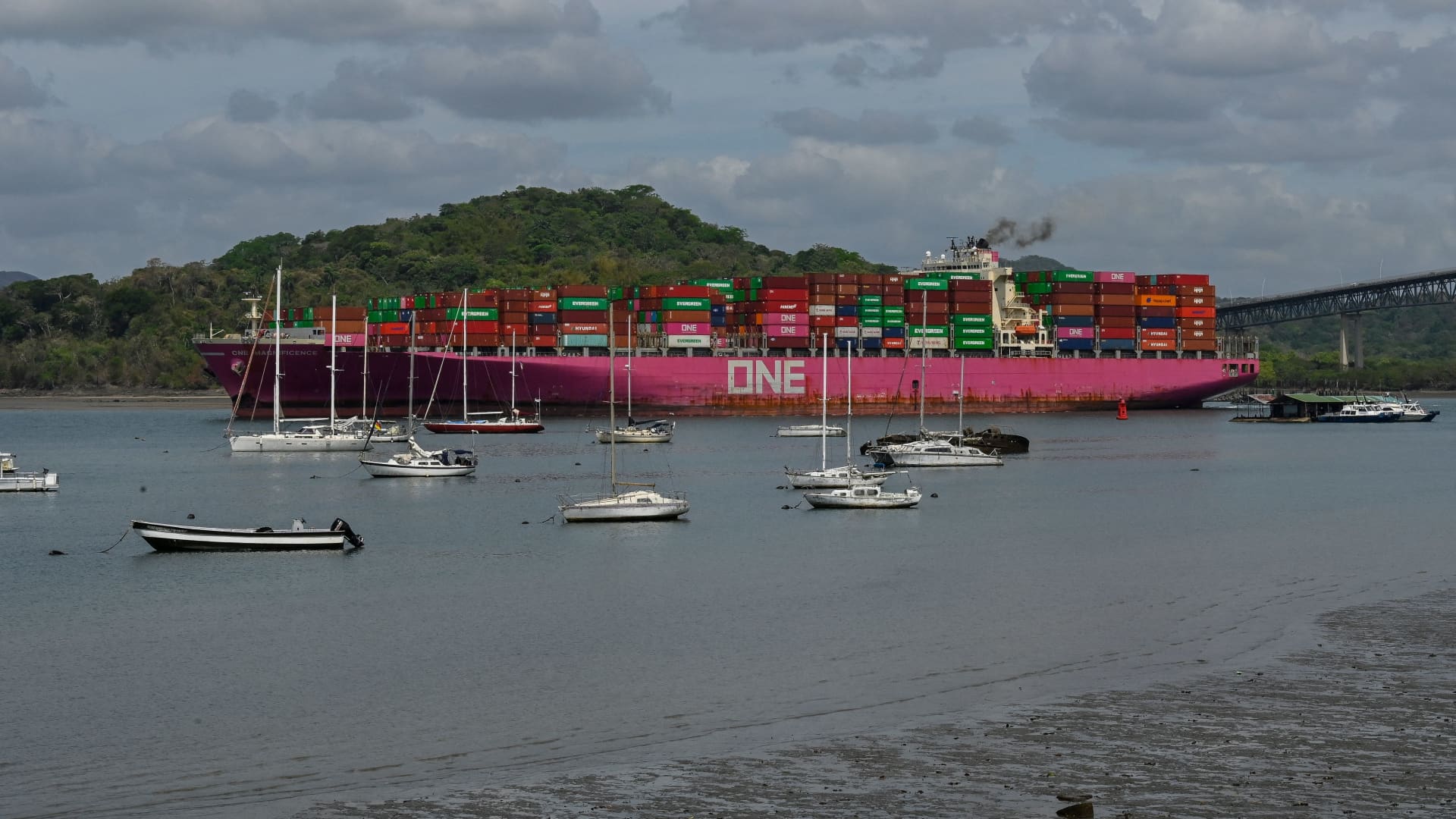The number of vessels waiting to cross the Panama Canal has reached 154, and slots for carriers to book passage are being reduced in an effort to manage congestion caused by ongoing drought conditions that have roiled the major shipping gateway since the spring. The current wait time to cross the canal is now around 21 days.
The Panama Canal is a critical trade link for U.S. shippers heading to Gulf and East Coast ports. The U.S. is the largest user of the Panama Canal, with total U.S. commodity export and import containers representing about 73% of Panama Canal traffic. Forty percent of all U.S. container traffic travels through the canal every year, about $270 billion in cargo.
The massive pileup is a result of water conservation measures the Panama Canal Authority deployed in late July due to drought. The PCA has temporarily lowered the availability of booking slots from August 8-August 21 for Panamax vessels, which are the largest vessels that can cross the canal. These vessels can carry 4,500 twenty-foot equivalent units (TEUs). The number of pre-booking slots was reduced to 14 daily from 23.
Satellite photos from Planet Labs detail the congestion.
Additional lower water level restrictions imposed by the PCA in July also require vessels to be 40% lighter, impacting vessels that were in transit when the requirements were implemented. The Ever Max was forced to unload 1,400 containers at the Port of Balboa in order to meet the requirements and gain passage. The vessel is currently anchored at the Port of Savannah.
“Those containers left will need another vessel to complete the journey,” said Captain Adil Ashiq, head of North America for MarineTraffic. “This is going to get worse before it gets better,” he said.
A canal lock loses 50 million gallons of water when a single vessel traverses the canal. Water levels in Gatun Lake, which feeds the canal, are at a four-year low.
Ricaurte Vásquez Morales, administrator of the Panama Canal, said considering the changing circumstances the canal is maintaining an open line of communication to keep customers informed about booking slot availability. “Through regular updates, transparent dialogue, and close collaboration with shipping lines and stakeholders, we strive to manage expectations and provide real-time information that enables our customers to make informed decisions,” he said.
Ashiq explained that vessels have to wait longer to transit the canal or ocean carriers make a business decision to take alternative routes, which add time and fuel costs to the journey. Shippers using multiple vessels to move their freight adds to freight costs, and longer lead times to secure bookings. Ultimately, he said, these costs may end up being passed down to businesses and consumers.
Recent data released by supply chain intelligence firm Descartes shows the East Coast ports continue to be the preference for U.S. shippers. West Coast ports saw a decrease of 38.3% in July trade, and top East and Gulf Coast ports processed an increase of 46.4%.
“Now is not the time to further stress supply chains that are still straining under ongoing logistical pressures,” said Stephen Lamar, president and CEO of the American Apparel & Footwear Association. He said surcharges and vessel restrictions will likely mean higher clothing and shoe prices for U.S. consumers this holiday season.
This latest reduction in bookings is on the heels of the PCA reducing the number of vessels allowed to go through the canal in a day. Starting on July 30, 2023, the daily transit capacity of the Panama Canal was adjusted to an average of 32 vessels per day (10 vessels in the newer Neopanamax locks, which serve the larger vessels, and 22 vessels in the older Panamax locks). Before the water conservation measures, transits were 34 to 36 a day.
Alan Baer, CEO of logistics company, OL USA tells CNBC, shippers may have to start looking at other routes.
“With the increasing difficulty of reaching the U.S. East Coast via the Panama Canal, importers may be looking at vessels transiting the Suez,” Baer said. He added that this can be an effective solution for freight originating in the ASEAN region and some Southern China origins. However, for Northern China and North Asia, deviation via the Suez can add seven to 14 days of additional transit time.
Energy sector diversions are already happening
Diversions are already happening in the energy sector. The mounting delays have clean tankers, which carry refined petroleum products, avoiding the canal, shifting their preference to book routes to the Atlantic Basin, according to S&P Global. Data from its Commodities at Sea unit shows that in the combined June to July period, U.S. Gulf Coast clean petroleum product exports using the canal and traveling to the West Coast of South America slowed by 82% year over year. Exports in July, specifically, were down 12% year over year.
Cheniere Energy announced in July that it would avoid the Panama Canal to ship LNG because of the wait times. The canal is the quickest route for the LNG market to reach Asia. Coal traffic is also being impacted and making adjustments. India is a big importer of U.S. coal and vessels carrying the commodity also use the Panama Canal.
